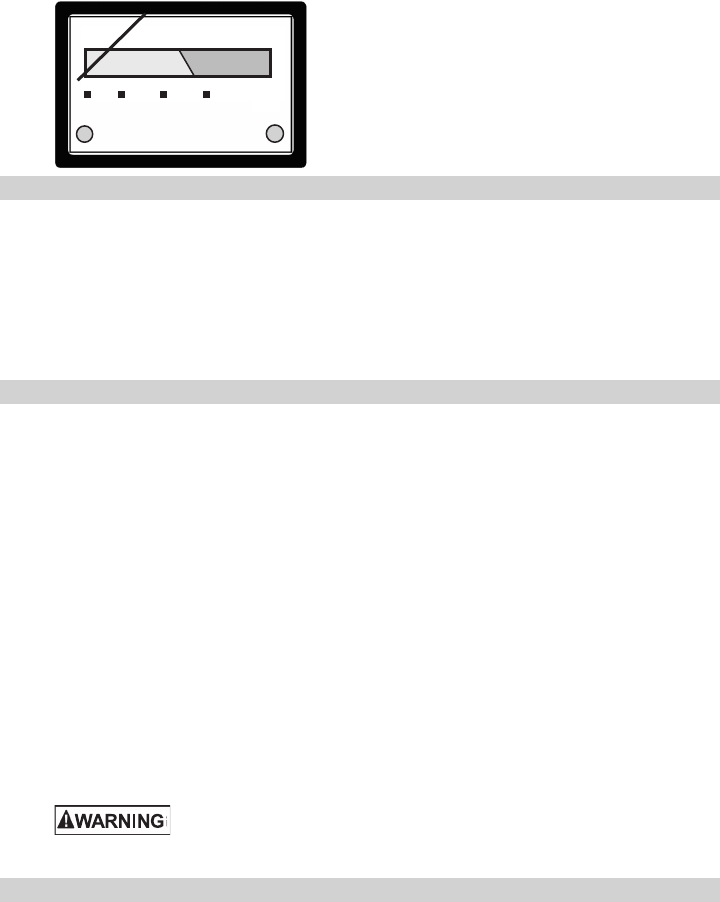
• 9 •
START
DC AMPS
FULL
CHARGE
CHECK
BATTERY
CHARGING
0
510
15
100
CHARGING
12. OUTPUT CONTROL
12.1 This battery charger is equipped with a self-resetting circuit breaker. This device protects
the charger from temporary overloads. In the event of an overload, the circuit breaker
will trip open, and after a short cooling off period, will reset automatically. This process is
known as cycling and can be recognized by an audible clicking sound.
12.2 This battery charger is equipped with an electronic control circuit which automatically
governs the charge rate to your battery. The charger will satisfactorily charge
maintenance-free and conventional batteries. The PS-1022MA (Manual Position) and
the PS-2100MA (6V 15A Position) are not controlled by the control board and must be
monitored. Overcharging can cause damage to your battery.
13. CHARGE PERIOD
The approximate time required to bring a battery to full charge state depends upon
the number of ampere hours (Ah) depleted from the battery. Ahs are determined by
multiplying the number of hours by the number of amps supplied to a load.
For example, if a load was connected to a battery, which drew 7 Amp for a period of 5
hours, the battery will have supplied 35 Ah. The approximate recharge time would then
be calculated by dividing the 35 Ah depleted from the battery, by the ampere charge rate
of the charger. To allow for tapering off of the charge rate, add 25% to the charge time.
Indications of a fully charged battery are:
1. When the meter indicates an intermittent current ow to the battery.
2. A hydrometer reading of the specic gravity of the electrolyte (uid) of a battery in
good condition should be between 1.250 and 1.285.
3. When a battery reaches 80–85% of full charge, bubbles will appear on the surface
of the uid. As the battery nears full charge, bubbling will become more noticeably
active.
4. The time required to charge two 6 Volt batteries connected in series will be the same
as for one 12 Volt battery of equivalent size.
5. DO NOT charge two 12 Volt batteries in parallel.
NOTE: Model PS-1275A – This model turns off when the battery is at full charge and
turns on again automatically when the battery needs to be recharged.
Models PS-1022MA and PS-2100MA: These models do not turn off
when in the “manual” position of the “type of battery” switch. Monitor the charger
frequently when charging a battery in the manual position.
14. MAINTENANCE INSTRUCTIONS
14.1 Before performing maintenance, unplug and disconnect the battery charger
(see Sections 6, 7 and 8).
14.2 After use, unplug the charger and use a dry cloth to wipe all battery corrosion and other
dirt or oil from the terminals, cords, and the charger case.
14.3 Servicing does not require opening the unit, as there are no user-serviceable parts.


















